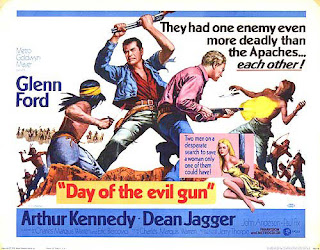Directed by Tay Garnett; produced by Tom Lewis
Cause for Alarm! had a very intriguing idea. It starts with a housewife (Loretta Young) doing chores and narrating the story. Her husband (Barry Sullivan) is ill, lying in bed upstairs with a problem that is described later as a ‘heart condition’. We learn very soon that Sullivan harbours the strong suspicion that Young and his doctor (Bruce Cowling), whom he believes is in love with Young, are trying to kill him. He writes a letter to the district prosecutor making his claim, and mails it. Young frantically attempts to retrieve the letter before someone in authority reads it.
The notion is good enough for a thriller by Hitchcock. Indeed, it seemed to me that that is the sort of film that the writers and producer were attempting. There are several characters in it that provide the black comedy or every-day routine that Hitchcock often put into his films, in juxtaposition to the very serious plot-line of murder or mayhem. The trouble is that the script just wasn’t good enough for the intention.
The characters mentioned come across as more annoying than funny; their actions do not heighten the tension of the movie, but get in its way. While acted well enough (especially by Irving Bacon, as a grumbling postman), they seem more like digressions than integral parts of the story. There are several scenes between Young and a little neighbour-boy (Bradey Mora) that are like intermissions, and whether they deviated from the script or were written that way, the dialogue sounds aimless; if it was improvised, then neither Young nor Mora were good at such ad lib.
As well, while the plot could have been made into a full and lengthy movie in the hands of a more talented director and better writers, there seemed enough story here for only an hour’s episode of a tv anthology series. I wondered, while watching it, why the meat of the story wasn’t given more time, which it certainly could have. Instead, we are shown flashbacks of Young’s cheerier days. These are needless; we assume that Young and Sullivan were happier at some point, and the flashbacks did not contain any clue as to what would occur in the future, which should be a major point of such reminiscences. I thought this a particularly valid complaint in view of Sullivan’s chilling recollection of a childhood incident, an event which should have foreshadowed the trouble, both in terms of the movie and his marriage with Young.
Cause for Alarm! had ingredients of an excellent thriller: an exciting premise, very good acting from Sullivan (less so from Young) and even a clever ending. But it was let down dreadfully by the chunky writing and mediocre direction. I’m not sure who could work such plot now to great advantage, but the film’s bare idea deserves a second chance, even if the movie itself does not.






























